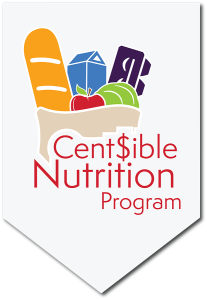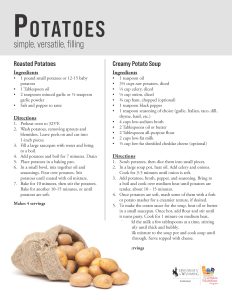Seasonal Produce Guide
- For fresh, look for: clean, smooth, firm-textured with no mold, sprouting, green color, or soft spots.
- Good source of: vitamin C, potassium, B vitamins
- Try: Boiled, mashed, baked, roasted, fried, stewed, cut up as fries or chips, in stir fries, in soups, in salads
Potato Fact Sheet & Recipes
Download and print the potato fact sheet for recipes and information about growing potatoes in Wyoming.
Storing & Preparing Potatoes
Storing Potatoes
How potatoes are stored is important for keeping them safe and usable. Keep these tips in mind for your fresh potatoes:
- Store potatoes in a cool, dark place with good air flow
- 40-55°F is a good temperature for storing potatoes
- Storing them in a place with higher humidity (95%) may help prevent them from shriveling
- Warm temperatures will cause the potatoes to sprout and increase the speed of shriveling and decay
- Potatoes with sprouts may still be usable, just cut off the sprouts before preparing
- Light causes potatoes to turn green and eating too much of a green potato can cause illness
- Cut off the green before cooking the potato
- Putting potatoes in a very cool place, like the refrigerator may cause potatoes to discolor and makes them taste sweeter
- Do not wash potatoes before storing
- Gently brush off dirt
- Ensure potatoes are dry
- Scrub potatoes just before using them
- Before storing potatoes, check over them for any cut or splits
- Use these potatoes right away and do not store them
Preparing Potatoes
Before cooking potatoes, there are a few important steps to take to make sure they are safe and delicious.
- Scrub skins under cool, running water to remove dirt with a vegetable brush
- Trim away any green spots or places where the potato was slightly cut
- To peel or not to peel
- Depends on the dish and preferences
- Potato skins provide a lot of nutrients



